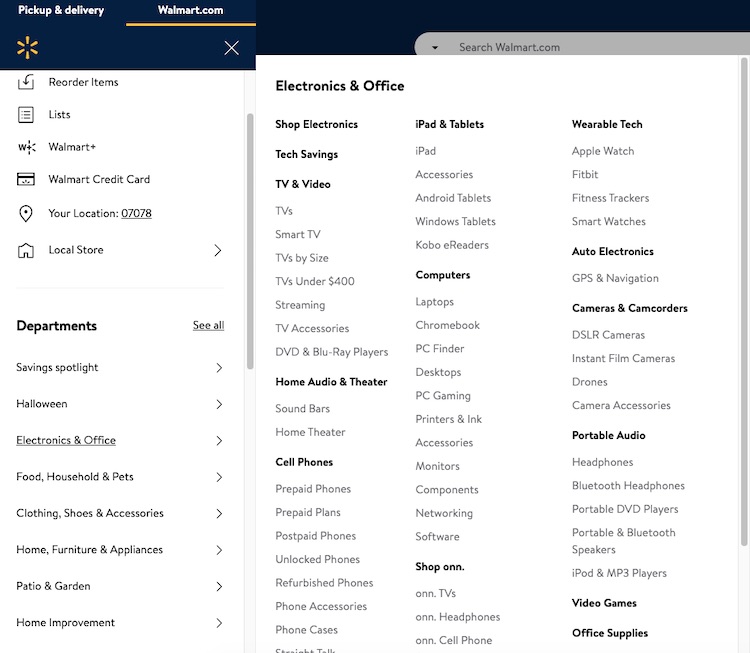For businesses looking to broaden content marketing efforts, owning a tightly organized website-structure can boost SERP results. One of the advanced SEO techniques that website owners should consider involves creating an SEO silo. SEO silos offer a user-friendly method to arrange web content.
Whether you’re starting from scratch or want to make your website’s current content library easier to navigate, clear website architecture is paramount to success. Sadly, only 33% of B2C businesses can boast implementing such a sophisticated content marketing strategy that generates positive results. When determining the success of your website and its content, user experience (UX) and search engine optimization (SEO) are the two core KPIs to examine. User experience relates to how user-friendly your website and its content are to visitors. Meanwhile, search engine optimization relates to how search engines rate the quality and relevance of your website’s content according to specific algorithms.
What is an SEO Silo?
Think back to the last time you visited your local public library (ok, you may have to go back to your childhood). With shelves packed to the brim and a multitude of categories like non-fiction, poetry, or mystery, finding a specific book poses a challenge if the library wasn’t already structured and organized to help visitors. An SEO silo is a top-down organizational approach to structuring a website’s content and internal link flow. Like a library’s catalog, a website with SEO silos neatly arranges related pages together using directory paths, categories, and internal HTML hyperlinks.

All the content on various website pages gets divided into clear distinct categories, which follow a hierarchy so that both visitors and search engines better understand featured content and its relation to other pages on the website.
What are the Two Types of SEO Silos?
There are also different 2 types of SEO silos: Physical Silos and Virtual Silos. Both types will help to reach the same result but rely on vastly different approaches. Regardless of the SEO silo chosen, the main goal is to provide a clear structure to search engines and to help people understand and find content without any hassle.
Physical SEO Silos
Physical Silos occur when website developers organize themes, topics, and keywords into subfolders under the main directory. Each subfolder focuses on one category but can expand into sub-directories for different products. Many websites with eCommerce capabilities – like Target, Wal-Mart, and Best Buy – use physical silo structures to help customers find relevant products and make sense of the overwhelming number of items.

Building a physical silo also requires website owners to manually create a collection of URLs with a similar structure. On Premiere Creative’s website, for example, we used this format for our various service pages:
- http://premierecreative.com/digital-marketing-agency/services/
- http://premierecreative.com/digital-marketing-agency/services/advertise/
- http://premierecreative.com/services/social-media/
- http://premierecreative.com/digital-marketing-agency/services/brand-building/
When WordPress has a parent/child relationship established in the page editor, this creates a URL structure that quickly articulates the content silo structure to search engines like Google or Bing.
Virtual SEO Silos
Virtual Siloing harnesses internal links to bridge pages with similar content together seamlessly. A virtual silo builds associations between content using HTML hyperlinks between pages. By doing this, you establish a clear connection between the content on your web pages with your website’s theme.
Since connections between web pages are made through hyperlinks, categories, tags, and custom posts, website owners don’t have to follow a strict URL structure like with physical silos. As a result, virtual silos are more common due to their simplicity.
What are the Benefits of SEO Silos?
You should notice immediate benefits. Google’s core mission is “to organize the world’s information and make it universally accessible and useful.” In other words, Google rewards websites that are relevant to search queries with higher positions on SERPs. Websites with a disorganized structure make it difficult for search engines to understand your website’s messaging. This, in turn, negatively impacts your keyword rankings.
By implementing SEO silos on your website, you improve how search engines interact with your website. Search engines award keyword relevancy based on the page’s content, and how it relates to the rest of your site. Keyword relevancy is a pivotal factor in local SEO, and Google makes every effort to display the most relevant local businesses in the search results. The closer your website’s content reflects your customers’ needs (including the language they use to search), the more relevant Google sees it.
Having topical content helps reinforce a website’s authority and thus an individual page’s rank. Furthermore, using SEO silos in your web marketing grants you other usability and technical benefits like:
- Reinforcing your internal linking strategy
- Helping to organize and visualize the website’s content
- Supporting the usage of breadcrumbs on your website
- Improving the chance of ranking for both long-tail and broad search terms with heightened keyword relevancy
- Creating a user-friendly experience for visitors with simple navigation
Tips for Creating an SEO Silo Structure
Again, this process takes some dedication and planning to successfully execute an SEO silo strategy. Creating a Silo structure usually includes the following steps:
- Brainstorm ideas with free tools like Google’s Keyword Planner or BuzzSumo.
- Organizing your content hierarchically based on your target keywords and topics)
- Properly siloing your website (by implementing categories, menus, breadcrumbs, internal linking URL structure, etc.)
- Creation of 301 redirects for use in URL structure updates
Support Your SEO Strategy with Silos
If you want your business to stay afloat in today’s dynamic online environment, you need a calculated action plan. Learn how to build a superior SEO strategy with Premiere Creative’s best-in-class digital marketing services. Dial (973) 346-8100 to connect with our team SEO strategists today!

